On my recent trip to Alaska to photograph the bears and landscape, I spent the majority of the workshop with no tripod. Don’t mis-understand, I brought a tripod with me on the trip, but I ended up not using it for the majority of the time. For those that know me, I am a staunch supporter of using tripods in the field. They provide so many benefits, particularly by 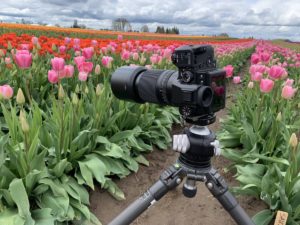 causing you to slow down and really work on your composition, allowing you to scan your entire frame to look for obstructions or to better frame up the compositional elements. Todays camera provide amazing image stabilization and I do know of folks starting to shoot more and more without a tripod, relying on the camera to provide the stability to get sharp shots.
causing you to slow down and really work on your composition, allowing you to scan your entire frame to look for obstructions or to better frame up the compositional elements. Todays camera provide amazing image stabilization and I do know of folks starting to shoot more and more without a tripod, relying on the camera to provide the stability to get sharp shots.
Some have argued that a tripod slows them down, weighs them down and doesn’t allow them to move and groove on location finding unique compositions. They find a “freeing” aspect of shooting without a tripod and often speak enthusiastically about the experience. Ok yea, I can grant them some of that, sure. It’s not that I can’t see the benefits of shooting without a tripod, I sure can. However, for me, the benefits of having my camera on a tripod far outweigh the benefits of using a tripod. Even with all the amazing technical advances in camera/lens stabilization, I still am a huge proponent for using a tripod! Especially for landscape photography, the thought of no tripod doesn’t make any sense to me. For my landscapes, I want to spend time “creating” a composition and fine tuning it, which can really only be done by slowing down and using a tripod. The “run and gun” style of handheld photography just doesn’t make sense for the kind of landscape photography I want to do. If that’s your bag, great! I’m not here to rain on your parade. I’m just stating my preference for how I choose to work.
OK, so why no tripod on this trip to Alaska? In past years trips, we had flown in to wilderness lakes and then walked along creeks and rivers and when we came across bears, we’d set our tripods and work the area until the bears headed off to another location. We’d then pack everything up and continue walking. Having our cameras on tripods allowed us to fine tune compositions for the bears that weren’t moving quickly and it provided a stable platform when there was fast action. Not to mention that when the action subsided, it gave me a place to rest the camera so I didn’t have to hold it the whole time. Simply put, shooting wildlife on a tripod worked for me. Based upon my past experience, I brought my lightweight tripod to Alaska and the thought of handholding really didn’t enter my head as I prepared for the trip. We were scheduled to visit the coastal bears and Brooks Falls, which both would be prime locations for using a tripod. There was a slight chance of us using rafts to access parts of Katmai National Park and I imagined the same gear would apply. Exact locations weren’t finalized until we got to our lodge and discussed with our outfitter.
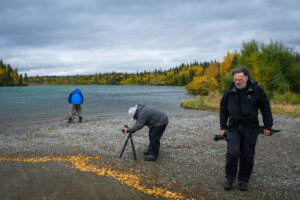 Our first day photographing we flew to Brooks Falls and had a fantastic time. We brought our tripods and used them to the fullest along the falls and lower bridges to photograph the bears fishing, swimming and playing. The second day, the weather had turned bad with high winds and rain, so we couldn’t get out flying. We headed out to shoot a fishing village with a Russian Orthodox church and then visit a waterfall nearby. Everyone brought and used their tripods the whole day, including me. So far, everything was working according to plan.
Our first day photographing we flew to Brooks Falls and had a fantastic time. We brought our tripods and used them to the fullest along the falls and lower bridges to photograph the bears fishing, swimming and playing. The second day, the weather had turned bad with high winds and rain, so we couldn’t get out flying. We headed out to shoot a fishing village with a Russian Orthodox church and then visit a waterfall nearby. Everyone brought and used their tripods the whole day, including me. So far, everything was working according to plan.
However, it turns out the bears had moved away from the coast and our best chances were to utilize rafts on many of the days to float several rivers right through the heart of where the majority of the bears are. For those of you who’ve ever rafted, you know that it can be ungainly to get in out of rafts and you have to think about how much and what kind of gear you bring. In talking with the outfitter before our first raft day, his recommendation would be for no tripods, or even camera bags! They would get in the way and be a pain to get in and out of the rafts…probably causing more trouble than they were worth knowing todays modern cameras. I agreed with him and gave the recommendation to our group. Everyone, thankfully, seemed OK with this. We would carry our cameras around our necks and any camera accessories we needed would be in a communal dry bag on the raft.
At this point I need to admit one of my “misses” on this trip. Since I photograph using a tripod 98% of the time, carrying a camera strap is not something I normally do.  It’s a secondary thought when I know I’m going to be handholding. Before this trip, the thought of a camera strap didn’t even enter my mind, it’s not part of my “regular kit” so I ended up in Alaska with no strap. Now, faced with a few days of raft trips, I needed to come up with a camera strap! I wasn’t the only one in this predicament, several folks faced the same challenge. We asked one of the lodge staff to raid the tool shed looking for paracord or anything else that we could fashion camera straps out of. Finding a roll of high strength cord, we initially made large loops of cord to hang the cameras around our necks. Eventually, someone at the lodge found a stash of left over camera gear and brought forth several straps that could be adapted for use on our cameras. I fashioned a couple of loops of cord and attached to my L-Bracket, having to go so far as removing the bracket and lacing the cord through a bracket opening and re-attaching the bracket to pinch the cord tight. Then, with a few hooks and the straps, I made a camera strap! It seemed like a simple task, but trust me it was a bit stressful because I knew the consequences of the strap failing and giving my camera a proper dunking in the Alaskan waters. After double and triple checking the knots and connections, I felt it was safe enough, and comfortable enough, for me to carry all day around my neck. No tripod for me!
It’s a secondary thought when I know I’m going to be handholding. Before this trip, the thought of a camera strap didn’t even enter my mind, it’s not part of my “regular kit” so I ended up in Alaska with no strap. Now, faced with a few days of raft trips, I needed to come up with a camera strap! I wasn’t the only one in this predicament, several folks faced the same challenge. We asked one of the lodge staff to raid the tool shed looking for paracord or anything else that we could fashion camera straps out of. Finding a roll of high strength cord, we initially made large loops of cord to hang the cameras around our necks. Eventually, someone at the lodge found a stash of left over camera gear and brought forth several straps that could be adapted for use on our cameras. I fashioned a couple of loops of cord and attached to my L-Bracket, having to go so far as removing the bracket and lacing the cord through a bracket opening and re-attaching the bracket to pinch the cord tight. Then, with a few hooks and the straps, I made a camera strap! It seemed like a simple task, but trust me it was a bit stressful because I knew the consequences of the strap failing and giving my camera a proper dunking in the Alaskan waters. After double and triple checking the knots and connections, I felt it was safe enough, and comfortable enough, for me to carry all day around my neck. No tripod for me!
 The next few days we took raft trips each day. We flew in to one lake in Katmai N.P., inflated the rafts and set off floating the river. When we came across bears along the river, we’d pull the raft over to a calm section of water and photograph the bear. Some folks would stay seated in the raft while others, including me, chose to hop out. I found standing up and having a good shooting posture really helped me get better shots. Plus, just the freedom of being able to move around to get a better angle on the bear, or get down low at water level made it worth the effort to hop out of the raft. We spent two days taking raft trips and on each float, no tripod! A big kudos to the entire group as everyone was positive and I didn’t hear one grumble from anyone about no tripod. We all adapted and made it work. And having seen the images from the group, everyone came home with some amazing handheld shots of the bears.
The next few days we took raft trips each day. We flew in to one lake in Katmai N.P., inflated the rafts and set off floating the river. When we came across bears along the river, we’d pull the raft over to a calm section of water and photograph the bear. Some folks would stay seated in the raft while others, including me, chose to hop out. I found standing up and having a good shooting posture really helped me get better shots. Plus, just the freedom of being able to move around to get a better angle on the bear, or get down low at water level made it worth the effort to hop out of the raft. We spent two days taking raft trips and on each float, no tripod! A big kudos to the entire group as everyone was positive and I didn’t hear one grumble from anyone about no tripod. We all adapted and made it work. And having seen the images from the group, everyone came home with some amazing handheld shots of the bears.
Our last day in Alaska was a travel day with a late flight out from the lodge.
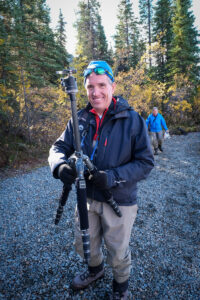
Mike Cooper aggravating Jack with center column
With not enough time to photograph the bears, we took a scenic trip to the Lake Clark N.P. and the cabin of Dick Proenneke. We all brought our tripods as this would be a “normal” type of photography day. Whats really funny though, as we photographed around the site, nobody used their tripods! Everyone handheld shots of the landscape and cabin. We had all gotten accustomed to shooting with no tripod, so that’s what we did. There is one time when I did get out my tripod and that was to shoot a panorama, otherwise, it stayed packed up on the beach.
Handholding is a skill, just like any other photographic skill. It’s something you need to practice and be comfortable with, especially when using long lenses! Minimizing camera shake caused my muscles or just breathing, is the goal because no matter how good modern camera image stabilization is, I still believe it’s critical to provide the most stable platform possible. My other admission is that I do not practice handholding, it’s something I do begrudgingly when I have no tripod. I just feel that I do my best work when the camera is on a tripod and I can spend the time I need to refine each composition.
Once I got home and reviewed my images, what I saw reinforced my feelings about shooting handheld for my particular style and what I like to do. I found more images that were shot hastily and the comp didn’t have the refinement I normally expect of myself. There were even series of shots that are blurry and un-usable because there was simply too much camera shake for the built in image stabilization. I know that with more practice, I could be better at composing on the fly shooting handheld, but right now this is not a skill I want to pursue. This no tripod thing is for the birds.

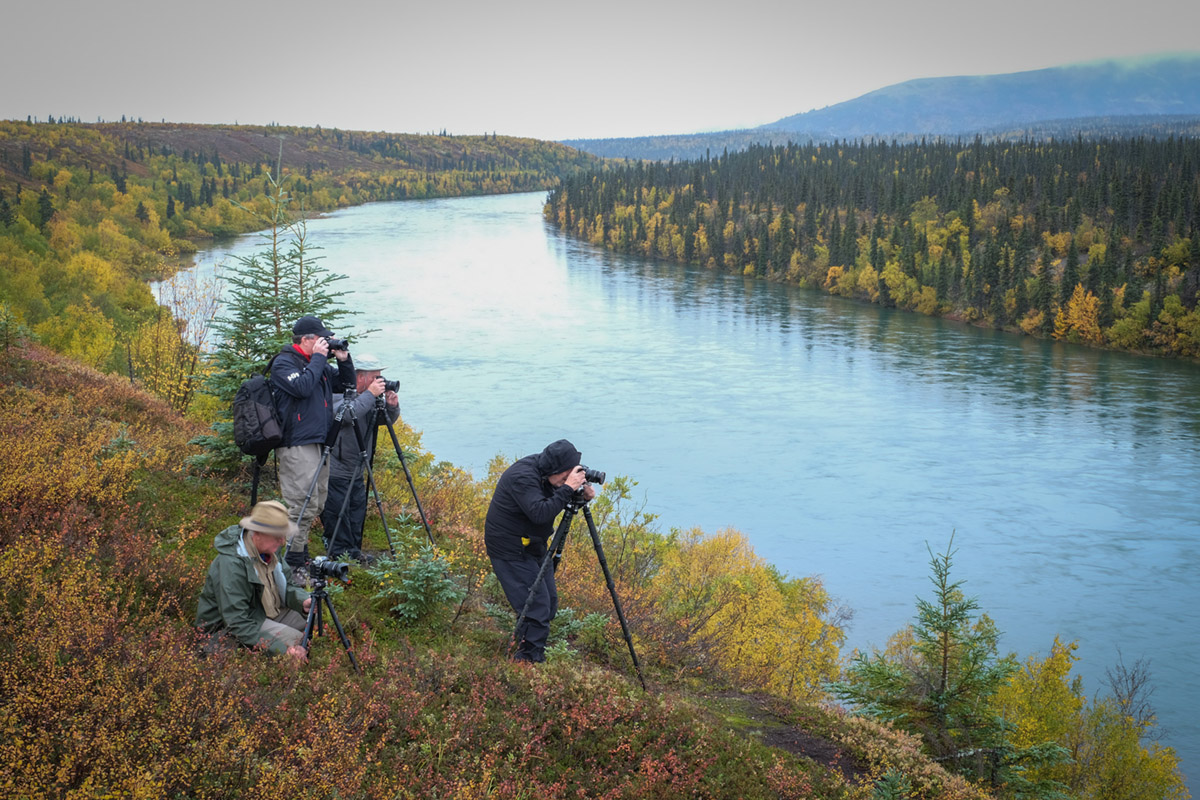
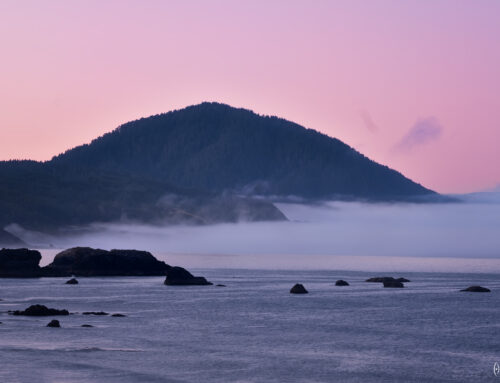
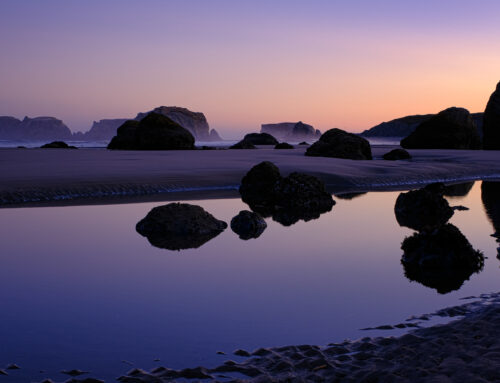
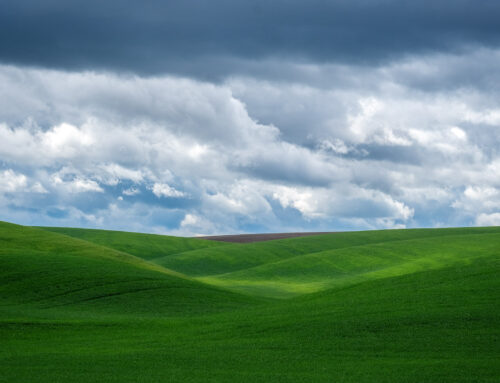
Leave A Comment